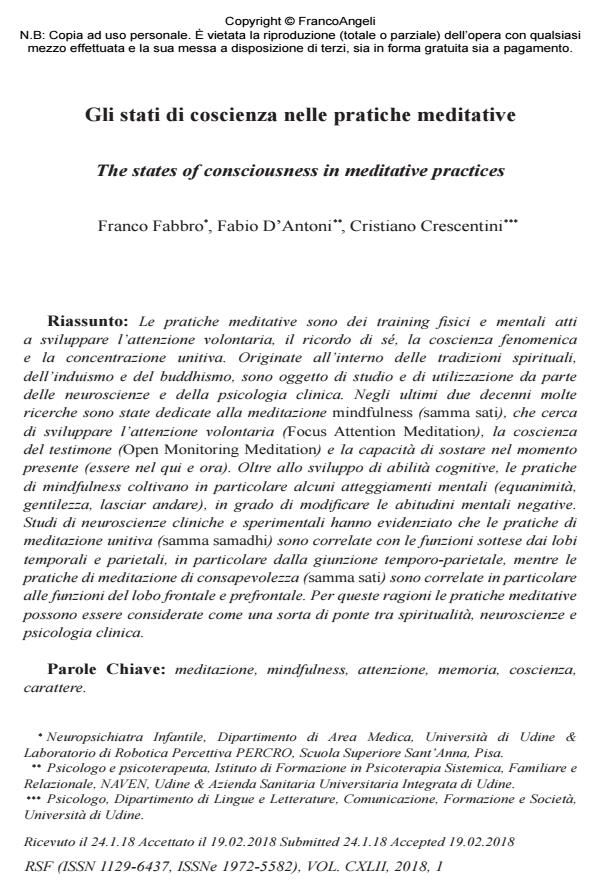The states of consciousness in meditative practices
Journal title RIVISTA SPERIMENTALE DI FRENIATRIA
Author/s Franco Fabbro, Fabio D’Antoni, Cristiano Crescentini
Publishing Year 2018 Issue 2018/1
Language Italian Pages 17 P. 93-109 File size 1743 KB
DOI 10.3280/RSF2018-001006
DOI is like a bar code for intellectual property: to have more infomation
click here
Below, you can see the article first page
If you want to buy this article in PDF format, you can do it, following the instructions to buy download credits

FrancoAngeli is member of Publishers International Linking Association, Inc (PILA), a not-for-profit association which run the CrossRef service enabling links to and from online scholarly content.
Meditative practices consist in body and mental training designed to develop voluntary attention, self-remembering, phenomenal consciousness and unitive concentration. These practices, stemming from the spiritual traditions of Hinduism and Buddhism, now receive increasing attention by neuroscience and clinical psychology. Over the past two decades, much research has been devoted to mindfulness meditation (samma sati) with the aim to develop voluntary attention (Focused Attention Meditation), "awareness of thinking" (Open Monitoring Meditation) and the ability to stay in the present moment (being in the here and now). Mindfulness practices not only develop cognitive skills, but also reinforce specific mental attitudes - such as equanimity, kindness, letting go - that can modify negative mental habits. Clinical and experimental neuroscience studies now highlight that the unitive meditation practices (samma samadhi) are correlated with the underlying functions of the temporal and parietal lobes, such as the temporal-parietal junction, whereas the mindfulness meditation practices (samma sati) are more related to the functions of the frontal and prefrontal lobes. Hence, meditative practices can be considered a bridge between spirituality, neuroscience and clinical psychology.
Keywords: Meditation, mindfulness, attention, memory, consciousness, character.
Franco Fabbro, Fabio D’Antoni, Cristiano Crescentini, Gli stati di coscienza nelle pratiche meditative in "RIVISTA SPERIMENTALE DI FRENIATRIA" 1/2018, pp 93-109, DOI: 10.3280/RSF2018-001006